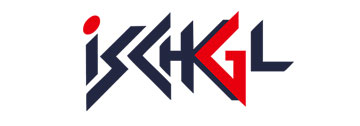Citizen-oriented and efficient digital administration
Lean administrative processes, modern working conditions, the effective use of resources, and a high level of acceptance among citizens and employees are key advantages of a functioning modern, digital administration. An important foundation for the success of digitalization is a powerful network infrastructure. This is the technical core of the digital transformation in the public sector.
Secure and sovereign digitalization with the NIS2 requirements
Public administration and the research sector will be covered by the EU Network and Information Security Directive, NIS2, in the future. It must be transposed into national law by October 2024. Compliance will be carefully monitored. This makes it all the more important to prepare for the new requirements now and take appropriate measures to comply – also to strengthen your own Digital Sovereignty. We are happy to help you identify these and implement them with digital sovereignty.
Check the need for NIS2 action now and strengthen Digital Sovereignty in the public sector!
Objectives of digitalization at public authorities
The central concern of a modern digital administration is citizen centricity. This requires better access to citizen services, i.e. an administration that can be reached from anywhere, around the clock, and from any device.

“We want Europeans to know: living, studying, working, doing business in Europe, you can count on top class connectivity, seamless access to public services, a safe and fair digital space.”
Commissioner for the Internal Market, Thierry Breton1
Why digital administration?
The starting point for any digital service is to uniquely identify the user for secure access to portals and applications – because these official matters are often extremely personal. The basic requirement for confidential communication and maximum data protection is an effective network infrastructure with the latest security systems.
Based on that, you need:
- An easy-to-find, navigable, and centralized information and communication offering
- A clear, user-friendly structure, with solutions for all user groups (such as people with disabilities)
- On-the-spot feedback and support
- The elimination of media breaks (online vs. postal, PDF vs. handwritten signature) for shorter processing times

Modern administration – seeing change as an opportunity
Government agencies also benefit from digitalization:
- Less load on the staff and more time for content-related tasks
- Improved perception by the citizens (up-to-date, effective, citizen-oriented, trustworthy)
- Time savings through better coordination of appointments
- Faster processes, lean workflows, higher efficiency and flexibility, conservation of resources, cost reductions
- Ability to act when time is critical or in crises, such as with the fast, encrypted transfer of health data in the event of a pandemic, or smooth communications in the event of natural disasters

Digitalization also has positive side-effects internally: With modern working conditions, the state can gain a reputation as an attractive employer, and recruit and retain skilled workers. And those who quickly address digital administration in their own area have a good chance of making a name for themselves as a best-practice role model.
Just as cities and municipalities grow and change structurally year by year, so does the associated IT infrastructure. Unfortunately, this does not always happen homogeneously or with the technical future in mind. As a result, often many different Internet connections and network components are used – which makes administration more difficult.
In the case of Ischgl, a municipality in Austria with a population of 1,630, LANCOM and Kufgem GmbH have worked hand in hand to set up a modern, digitally sovereign IT network for the schools, kindergartens, the municipal office, and the recycling and building yard, among others. With an infrastructure engineered in Germany and managed via the LANCOM Management Cloud, the municipality is now optimally equipped for the digital future.
No responsibility is as great as the invulnerability of other people. Particularly in disaster control, criteria such as the constant availability and fail-safety of communications and Internet access quickly become a matter of life and death.
LANCOM Systems understands this importance and has developed a highly flexible and secure networking solution for the Rhine-Hunsrück district in Rhineland-Palatinate. The command center, TEL units, and the fire department command center are always connected to each other in securely separated networks by redundant cellular routers and WLAN components, and can be remotely maintained in terms of network technology by the LANCOM Management Cloud.
Aid organizations not only act as rescue networks themselves, which should always be available and function smoothly – they also need a correspondingly reliable network infrastructure in order to be able to carry out their important work. Kindernothilfe is committed to the rights and protection of disadvantaged children and young people in developing countries.
For its diverse projects in 33 countries with over 340 partner organizations and around 1,000 volunteers, it needs a uniform, GDPR-compliant network consisting of LAN and WLAN components as well as cloud management. Read our report to find out how LANCOM and Netzlink Informationstechnik GmbH achieved all of this in just one week:
The digital transformation to citizen-centric online bureaucracy takes place primarily in the mind: Entire mindsets, processes, and systems need to be revised and modernized.
Digital administration not only requires an online portal that is accessible 24/7, where all public services can be accessed and which is also practicable and user-friendly on mobile devices. It also needs a secure, verified electronic identification system (eID) for citizens and official, forgery-proof electronic applications, certificates, etc. (eDocuments), so that both sides feel safe and can work legally.
Bureaucratic processes on the Internet will become more efficient the more uniform information is stored centrally for all authorities and is shared by them. Also, the – partially automated – digital communication channel and application forms pre-filled with basic data, which independently inform about the process flow and standard duration, make administrative matters more transparent and save time and paper.
But in order to move public services into the digital world, the connecting piece is first required: the network (network) that holds everything together securely. Networked authorities, maximum security, high-quality WLAN, and simple, convenient network management that supports operations to such an extent that you can concentrate fully on your day-to-day business – with LANCOM Systems, the basis for digital administration is just right.
Technical requirements for a modern administration
Essential technical factors for successful digitalization are:
Fast, always available Wi-Fi
In order to be able to work quickly and efficiently, a high-performance Wi-Fi is needed in the administration office. The latest Wi-Fi 6E WLAN generation ensures particularly fast internal networking and high-performance provision of on-site citizen services. With new frequency bandwidths, additional channel bandwidths and higher transmission rates, the wireless connection quality in your premises is taken to a new level.
LANCOM Active Radio Control 2.0
New devices, structural changes, surrounding foreign networks – Wi-Fi quality is subject to constant change and can become more stressed over time. The self-learning automation solution in the LANCOM Management Cloud, LANCOM Active Radio Control 2.0, registers such changes and optimizes your Wi-Fi accordingly at the push of a button: for worry-free and cost-efficient Wi-Fi operation.

Zero Trust Network Architecture (ZTNA)
ZTNA is a new, forward-oriented concept for secure communication between business units and employees. Access rights and the associated security measures are controlled centrally by a ZTNA broker. Highly differentiated authorizations at application level and security levels per employee and service ensure maximum information and communication security. In the final implementation stage of a ZTNA infrastructure, a traditional VPN client is no longer necessary.
IT networks as the basis of all digital administrative processes
The digitalization of administration is more than a nice user interface. It requires a profound change, often a completely new view of administrative processes. Availability, access and data protection, networking, and modern working – a secure, stable and high-performance IT network is the basic requirement for all of these benefits.
Together with experienced IT partners, LANCOM Systems supports the public sector with the planning and implementation of secure and stable network infrastructures “Engineered in Germany”. Our comprehensive solutions help to improve efficiency in administration.

Our solutions are:
- Certified (BSI, IT-Security Made in Germany) and awarded multiple times (PUR-Champion Virtual Private Network and Network Management & Monitoring, Channel Excellence Netzwerke und Security, ecovadis Gold)
- Equipped with state-of-the-art security technology such as cloud-managed VPN and the Zero-Trust principle
- "Made in Germany" (designed for digital sovereignty)
- Guaranteed free from backdoors and GDPR-compliant
- Future-proof thanks to high performance, security, and scalability – even with increasing performance requirements

LANCOM Systems offers:
- Expertise and experience in building networks in the public sector
- Complete solutions from a single source
- Central management, local partners/IT service providers
- Support (English / German)
- Free firmware
Securely managing billions of personal data sets is a heavy responsibility. What a relief not to have to worry about hidden eavesdropping interfaces (backdoors) in your network!
LANCOM Systems is a trusted German manufacturer that is subject to European law and cares about data protection and digital sovereignty. For this reason, these aspects are directly included in the planning of a LANCOM network in order to provide our users with the best possible technical protection and reduce their workload.

Thomas Wenderoth
VP Business & Market Development
thomas.wenderoth@lancom.de
Tel.: +49 2405 49936 258
Mobil: +49 151 17487525





















